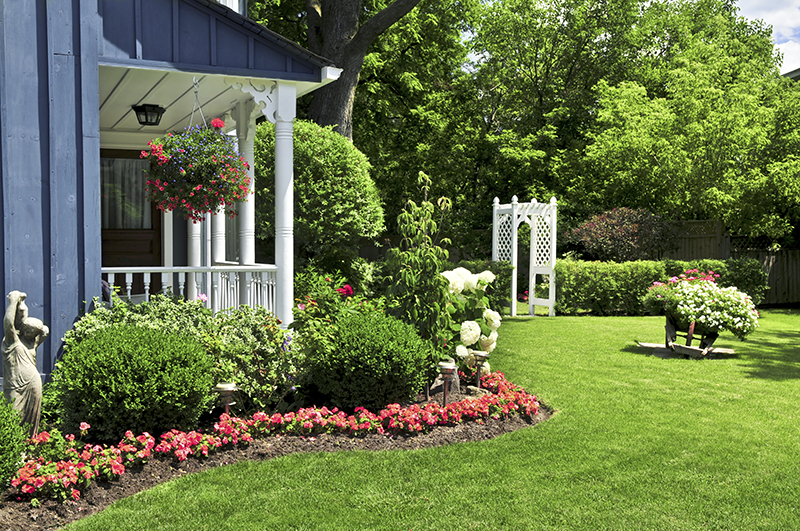Great yards don’t grow overnight. They need ongoing nurturing with the right care, nutrients, and plenty of time. The best time to start preparing your yard for spring was months ago. But the second-best time is right now. Here’s how you can start getting your yard healthy, beautiful, and green for spring.
1. Clean Up the Surface
First things first: the lowest-hanging fruit of a clean, green lawn is to remove as much debris and clutter as possible. Pick up twigs and sticks, rake leftover leaves from the fall, and get rid of any trash that has edged its way into your property.
Not only does a quick surface cleanup give your yard an instant facelift, it also makes the rest of your lawn care easier. Twigs, rocks, and other debris can clog your lawnmower and make it less effective. And too much debris will block your fertilizer and pre-emergent from entering your soil. We also recommend scalping the lawn (cutting it very low). Make sure you bag or rake up clippings on this mow. We suggest doing this late March or early April in order to remove the dormant (dead) grass.
2. Do a Deep Raking
Before you start nurturing your yard, it’s a good idea to do some deep raking to remove thatch and other debris you missed during the surface cleaning. Raking breaks up any dead turfgrass from the last season so that new grass has room to grow.
It’s best to use a flexible rake so that you don’t damage any new grass that doesn’t yet have strong roots. Metal tines can damage young plants and delay the results you want.
3. Apply a Pre-Emergent and Post-Emergent
Pre-emergent is an herbicide that prevents crabgrass and other unwanted weeds. Weeds grow quickly, and when their growth is uncontrolled, they can choke out your grass and other plants that you want to keep. However, the pre-emergent won’t kill your healthy grass and plants.
It’s best to apply the pre-emergent before you see weeds start growing. That’s because rather than kill weeds, it prevents them from sprouting in the first place. Once weeds sprout, pre-emergent won’t be effective.
You need to apply pre-emergent each year, as it usually only lasts a few months. At the end of the season, you can apply it again to prevent weeds in the fall.
Early spring is the ideal time to apply pre-emergent in Alabama. But if you are too late in applying pre-emergent and are already seeing weeds spring up, not all hope is lost. You can opt for a post-emergent instead, usually in mid to late spring. Post-emergent targets weeds that have already sprouted and will not negatively impact the surrounding grass.
4. Trim Back Your Trees and Shrubs
All the work you put into cleaning up your lawn can be washed away in just one April shower. Winds and rains can blow tree limbs, twigs, and other debris all over your yard. So, prevent it by trimming back trees and shrubs. This keeps all of your greenery looking fresh and well-cared for, plus it reduces the amount of debris that may end up on your lawn.
As an added bonus, getting rid of large dead limbs now can help to prevent damage to your property. Spring and summer can be stormy in Alabama, which can increase the risks of damage to your home.
5. Tidy Up Your Beds
Now is also a good time to clean up your flower beds. Remove any twigs or debris, then spread a heavy mulch that will stay in place throughout spring winds and rains. Mulch creates a beautiful visual edge between your beds and your lawn, adding a nice contrast for instant curb appeal.
Get your yard ready for spring — contact us today to schedule your lawn treatments!


Recent Comments